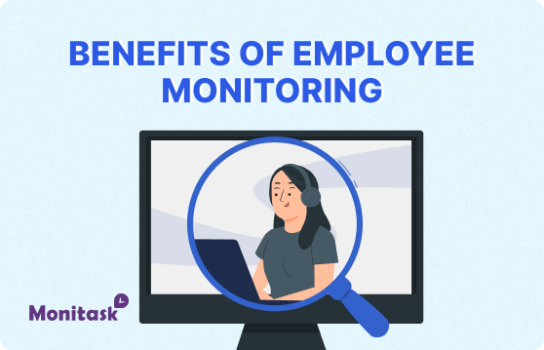What Is Cybersecurity Compliance?
Cybersecurity compliance refers to the process of adhering to regulatory standards, industry guidelines, and best practices designed to protect sensitive data and information systems from cyber threats. It involves implementing security controls, policies, and procedures to meet specific requirements set by governing bodies or industry standards. Key aspects include risk assessment, data protection, incident response planning, and regular audits.
In today's digital landscape, cybersecurity compliance has become an essential aspect of business operations across all industries. As cyber threats continue to evolve and become more sophisticated, organizations must adapt their security measures to protect sensitive data, maintain customer trust, and avoid costly breaches. This glossary entry will delve into the intricacies of cybersecurity compliance, its importance, key frameworks, and best practices for implementation.
Understanding Cybersecurity Compliance
Cybersecurity compliance is not just about ticking boxes on a checklist; it's a comprehensive approach to safeguarding an organization's digital assets. It encompasses a wide range of activities, including:
- Risk assessment and management
- Implementation of security controls
- Employee training and awareness programs
- Regular security audits and assessments
- Incident response planning
- Continuous monitoring and improvement
The goal is to create a robust security posture that can withstand evolving threats while meeting regulatory requirements. It's worth noting that compliance doesn't automatically equate to security, but it provides a solid foundation for building a comprehensive cybersecurity program.
Key Cybersecurity Compliance Frameworks
Several frameworks and standards guide organizations in their cybersecurity compliance efforts. Here are some of the most prominent ones:
| Framework | Description | Applicable Industries |
| NIST Cybersecurity Framework | Provides guidelines for managing and reducing cybersecurity risk | All industries |
| ISO 27001 | International standard for information security management systems | All industries |
| GDPR | European Union regulation for data protection and privacy | Any organization handling EU citizens' data |
| HIPAA | U.S. regulation for protecting healthcare information | Healthcare and related industries |
| PCI DSS | Standard for organizations that handle credit card information | Retail, e-commerce, financial services |
Each framework has its own set of requirements and guidelines, but they all share the common goal of protecting sensitive information and maintaining the integrity of information systems.
The Importance of Cybersecurity Compliance
Adhering to cybersecurity compliance standards is crucial for several reasons:
- Legal and Regulatory Requirements: Many industries are subject to specific regulations that mandate certain security measures. Non-compliance can result in hefty fines and legal consequences.
- Protection Against Cyber Threats: Compliance frameworks are designed to address known vulnerabilities and protect against common attack vectors.
- Customer Trust: Demonstrating compliance can enhance customer confidence in an organization's ability to protect their data.
- Competitive Advantage: In some industries, compliance certifications can be a differentiator in winning contracts or partnerships.
- Risk Management: Compliance helps organizations identify and mitigate potential security risks before they lead to breaches.
According to a 2024 report by Cybersecurity Ventures, the global cost of cybercrime is expected to reach $10.5 trillion USD annually by 2025, up from $3 trillion USD in 2015. This staggering increase underscores the critical importance of robust cybersecurity compliance measures.
Implementing Cybersecurity Compliance
Implementing a comprehensive cybersecurity compliance program can be a complex undertaking. Here are some key steps organizations should consider:
- Assess Current Security Posture: Conduct a thorough assessment of existing security measures and identify gaps.
- Choose Relevant Frameworks: Select the compliance frameworks that are most applicable to your industry and business needs.
- Develop Policies and Procedures: Create clear, documented policies that outline security practices and expectations.
- Implement Security Controls: Deploy necessary technical controls, such as firewalls, encryption, and access management systems.
- Train Employees: Conduct regular security awareness training for all staff members.
- Perform Regular Audits: Conduct internal and external audits to ensure ongoing compliance.
- Continuous Monitoring: Implement tools and processes for real-time monitoring of security events.
- Incident Response Planning: Develop and regularly test an incident response plan.
It's important to note that cybersecurity compliance is not a one-time effort but an ongoing process that requires continuous attention and improvement.
Challenges in Cybersecurity Compliance
While the benefits of cybersecurity compliance are clear, organizations often face several challenges in achieving and maintaining compliance:
- Complexity of Regulations: With multiple frameworks and regulations, it can be challenging to navigate the compliance landscape.
- Resource Constraints: Implementing comprehensive security measures can be costly and time-consuming.
- Evolving Threat Landscape: Cyber threats are constantly evolving, requiring organizations to adapt their security measures continually.
- Legacy Systems: Older systems may not be designed with modern security standards in mind, making compliance difficult.
- Human Factor: Employee errors or negligence can lead to security breaches, even with robust technical controls in place.
Did you know? According to a 2024 study by Ponemon Institute, the average cost of a data breach in the United States reached $9.44 million USD, an increase of 4.3% from the previous year. This highlights the financial imperative of strong cybersecurity compliance measures.
Emerging Trends in Cybersecurity Compliance
As technology and threats evolve, so do compliance requirements and best practices. Here are some emerging trends in cybersecurity compliance:
- AI and Machine Learning: Advanced algorithms are being used to detect and respond to threats more quickly and accurately.
- Zero Trust Architecture: This security model assumes no trust by default and requires verification from everyone trying to access resources in a network.
- Cloud Compliance: As more organizations move to the cloud, compliance frameworks are adapting to address cloud-specific security concerns.
- Privacy-Enhancing Technologies (PETs): These technologies help organizations comply with privacy regulations while still deriving value from data.
- Continuous Compliance Monitoring: Real-time monitoring tools are becoming essential for maintaining ongoing compliance.
Organizations need to stay informed about these trends and adapt their compliance strategies accordingly.
The Role of Third-Party Risk Management
In today's interconnected business environment, cybersecurity compliance extends beyond an organization's own systems. Third-party risk management has become a critical component of compliance efforts. This involves assessing and monitoring the security practices of vendors, partners, and other external entities that have access to an organization's data or systems.
Key aspects of third-party risk management include:
- Vendor assessment and due diligence
- Contractual requirements for security measures
- Ongoing monitoring of third-party security practices
- Incident response coordination with third parties
Many compliance frameworks now include specific requirements for third-party risk management, recognizing the potential vulnerabilities introduced by external partners.
The Cost of Non-Compliance
While implementing robust cybersecurity compliance measures can be expensive, the cost of non-compliance can be far greater. Consider the following potential consequences:
| Consequence | Potential Cost |
| Regulatory Fines | Up to €20 million or 4% of global turnover under GDPR |
| Legal Fees | Varies, but can reach millions in complex cases |
| Reputational Damage | Difficult to quantify, but can lead to significant loss of business |
| Operational Disruption | Average cost of downtime: $5,600 USD per minute |
| Customer Compensation | Varies based on breach severity and number of affected customers |
These figures underscore the importance of viewing cybersecurity compliance as an investment rather than a cost center.
Best Practices for Maintaining Cybersecurity Compliance
To effectively maintain cybersecurity compliance over time, organizations should consider the following best practices:
- Establish a Compliance Culture: Make compliance a part of your organization's DNA by fostering a culture of security awareness.
- Regularly Update Policies: Review and update security policies at least annually to address new threats and regulatory changes.
- Conduct Frequent Risk Assessments: Regularly assess your organization's risk profile and adjust security measures accordingly.
- Invest in Training: Provide ongoing security training for all employees, not just IT staff.
- Leverage Automation: Use compliance management tools to automate routine tasks and ensure consistent application of security controls.
- Stay Informed: Keep abreast of changes in compliance requirements and emerging security threats.
- Engage with Experts: Consider partnering with cybersecurity consultants or managed security service providers for specialized expertise.
Remember, cybersecurity compliance is not a destination but a journey. It requires ongoing commitment and adaptation to stay ahead of evolving threats and regulatory requirements.
Pro Tip: Consider obtaining cybersecurity insurance to help mitigate the financial impact of potential breaches or compliance failures. However, note that many insurers now require proof of robust security measures before providing coverage.
Conclusion
Cybersecurity compliance is a critical aspect of modern business operations, encompassing a wide range of activities aimed at protecting sensitive data and information systems. While achieving and maintaining compliance can be challenging, the potential consequences of non-compliance far outweigh the investment required.
As cyber threats continue to evolve and regulatory requirements become more stringent, organizations must prioritize cybersecurity compliance as a fundamental business practice. By adopting a proactive approach, staying informed about emerging trends, and fostering a culture of security awareness, organizations can not only meet compliance requirements but also build a robust security posture that protects their assets, reputation, and bottom line.
In the words of Jen Easterly, Director of the U.S. Cybersecurity and Infrastructure Security Agency (CISA), "Cybersecurity is not just an IT issue, it's a business issue and a national security issue." This sentiment underscores the critical importance of cybersecurity compliance in today's digital landscape.
Remember: Compliance is not just about meeting regulatory requirements; it's about building a resilient organization capable of withstanding the ever-evolving cyber threats of the 21st century.
As we move forward in an increasingly digital world, cybersecurity compliance will continue to play a pivotal role in shaping business strategies, risk management practices, and technological innovations. Organizations that embrace this reality and invest in robust compliance programs will be better positioned to thrive in the face of cyber challenges.


